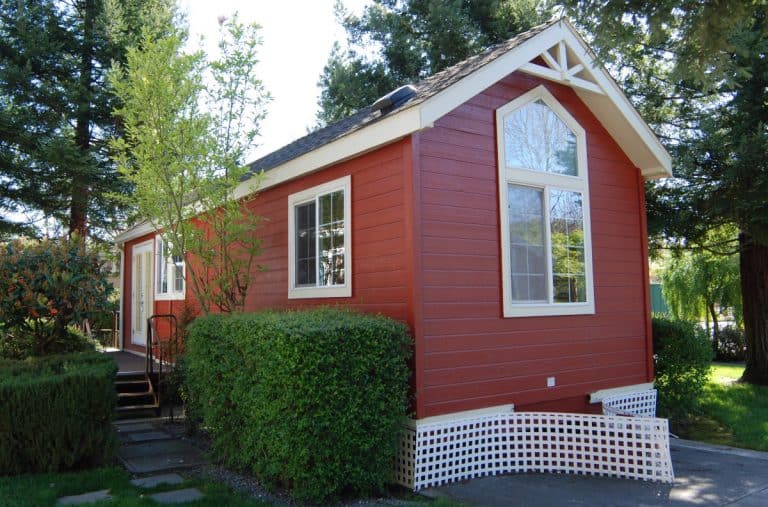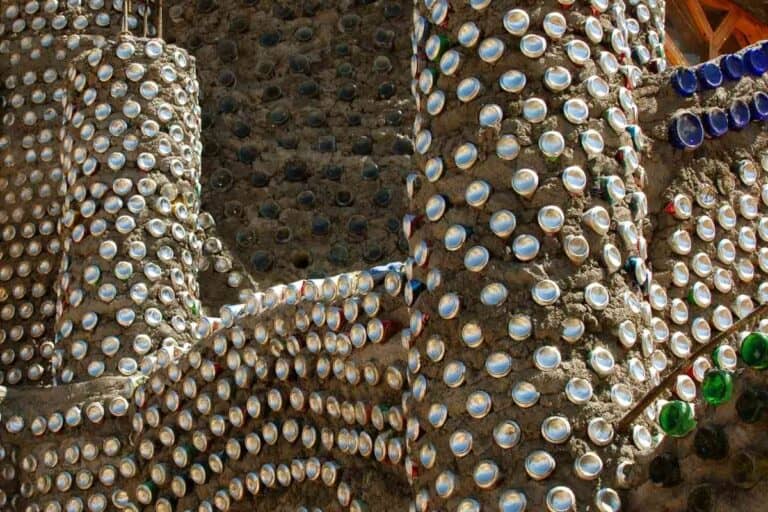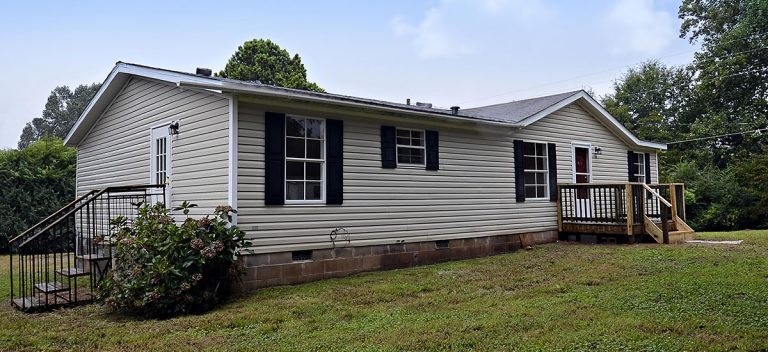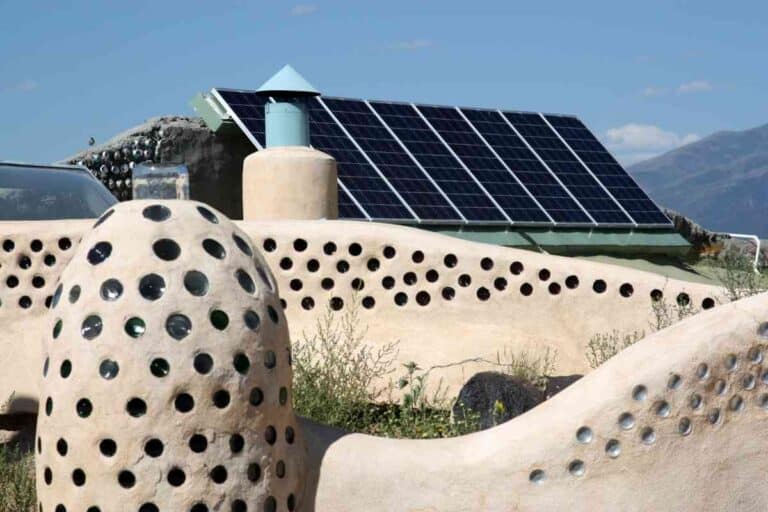Worst Trees For Treehouses: The Ultimate Guide!
If you’re considering building your treehouse in your backyard, there are several things you need to consider, such as building the foundation, laying the platform, and a lot more! But, the first thing on your list should be choosing the right trees for your treehouse.
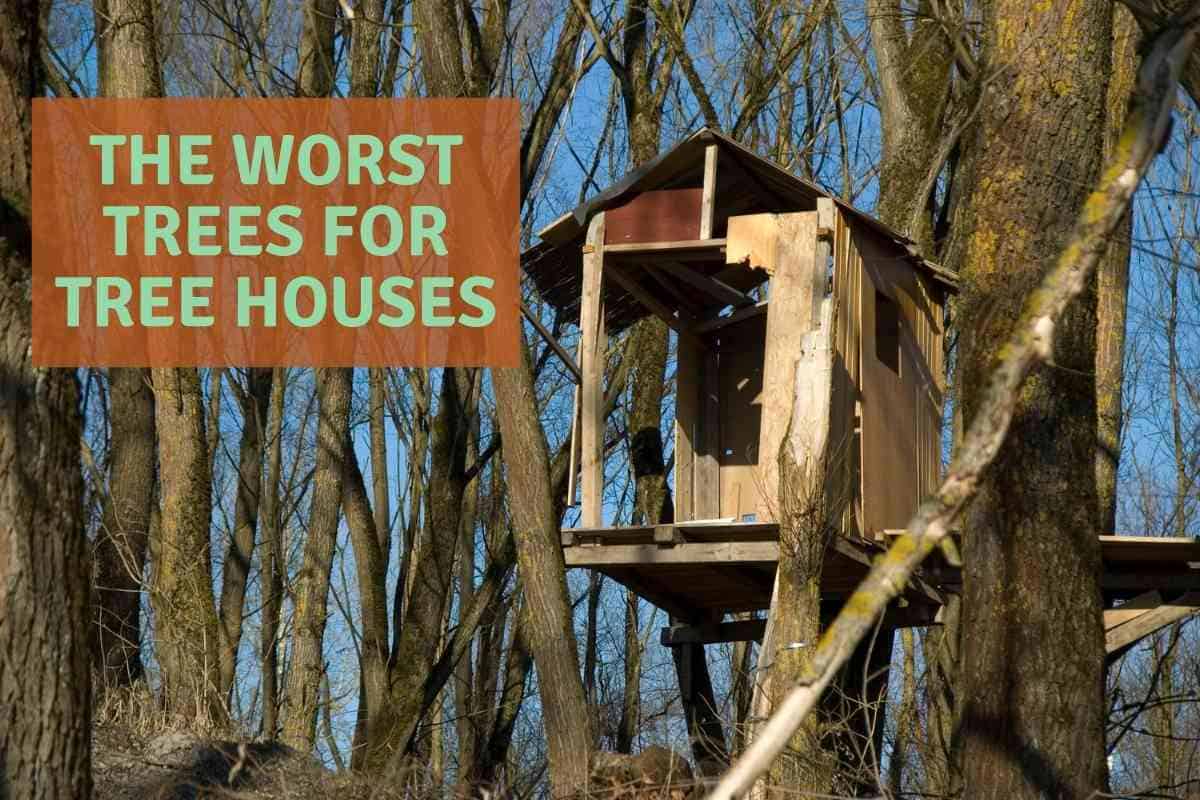
Worst Trees For Tree Houses
The worst trees for tree houses are unstable, weak, and young softwood trees that have been infected with rot, fungus, or pests. While each of these reasons is enough to make a tree inappropriate for a treehouse, when all these factors combine, they make for an unsafe treehouse for your family.
And while treehouses hold a special place for the entire family, finding the right trees for the treehouse can be challenging. There are also specific factors that make a tree unsuitable for a treehouse.
A lot of people think that treehouses are dangerous, but that’s usually just because whoever constructed it didn’t use the right treehouse material. That or they were playing on it unsafely.
What Factors Make a Tree Bad for Tree Houses?
When it comes to choosing trees for the treehouse, there is no single best or worst tree for a treehouse. However, several factors can make a tree worse for the treehouse.
Since safety is integral when building a treehouse for your loved ones, you have to consider a few factors that will decide how safe, stable, and comfortable your treehouse will be. Here are some of the factors that influence how good or bad a tree will be to support a treehouse for your family.
Type of Wood
When it comes to trees, typically, there are two main types of wood found: hardwood and softwood.
While the two types of wood have distinct names, their names do not have to do anything with how hard or soft the wood is. In fact, their names are based on how difficult it is to cut or move the trees.
Trees that are more difficult to cut and move are known as hardwoods. They are deciduous trees that shed their leaves in the fall.
Moreover, hardwood trees also tend to grow more slowly. Since they grow more slowly, they are denser than other trees.
On the other hand, softwood trees are evergreen and grow quickly, which is why they are less dense and easy to cut and move.
The lower density of wood in softwood trees indicates that these trees are not as sturdy as hardwood trees and cannot bear weight, especially over time, making softwood trees unsuitable for building a treehouse.
Moreover, softwood trees are more susceptible to wear and tear over time, more vulnerable to attracting insects, and have poor fire resistance.
The higher wood density of hardwood trees makes them a more appropriate choice for treehouses as compared to softwood trees. Given that they are sturdier and more resilient than others and can better withstand environmental conditions, including insect infestation, hardwood trees are more suitable for building treehouses.
Therefore, hardwood trees like oak, cedar, beech, maple, and hickory make ideal trees for tree houses whereas softwood trees like pine make one of the worst trees for treehouses.
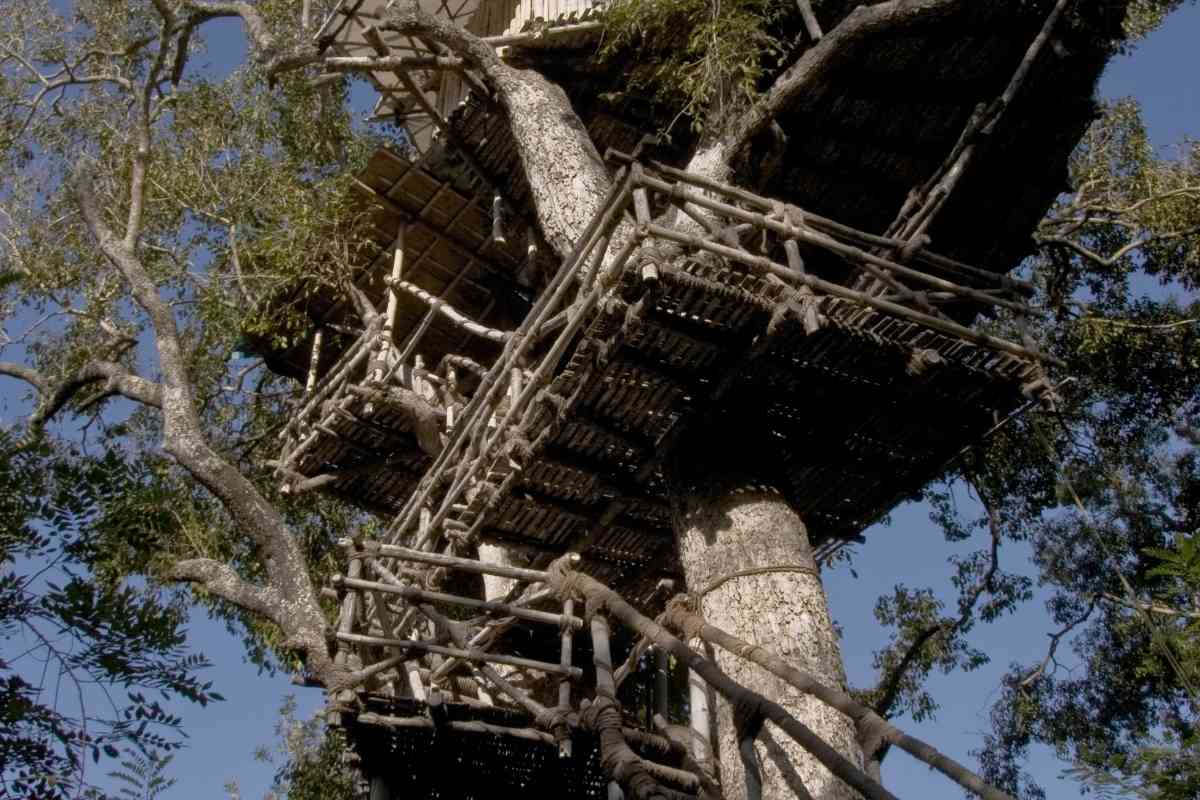
The Overall Health of the Tree
Another critical factor that plays an important role when choosing a tree to build your treehouse is the tree’s overall health. If you opt for trees that are not healthy, regardless of their type, their load-bearing capacities and their longevity is compromised. Hence, these factors do not make them suitable for building a treehouse.
How long a treehouse lasts depends on how well it’s made. Ideally, you want to find a tree that will live longer than your treehouse will.
But if you are wondering how you can determine the health of a tree, it’s important to take a look at some aspects of the tree.
Healthy trees can be identified by their leaf coverage and symmetry. When a symmetrical tree has at least one-third or more of its height covered with leaves, it indicates that the tree is in good health.
On the other hand, some of the symptoms of trees with poor health can be observed in the leaves, trunk, branches, and crown. These may include the following:
- Unseasonal or unusual discoloration at the crown
- Wilting leaves
- Spots and scars on the tree trunk and branches
Apart from the most obvious symptoms of a tree with poor health, some trees may also be attacked by parasites and insects or mold and other growth that can lead to damage in the long term.
Therefore, it is important to carefully observe these symptoms and use them to decide whether the tree is healthy or not, especially when you are choosing the right tree for your treehouse. Additionally, one of the worst trees for treehouses is the sycamore tree because it is prone to diseases.
Stability and Movement of the Tree
Tree stability and movement refer to how well the tree can hold steady under different environmental conditions, such as windstorms that are inevitable, especially in areas prone to hurricanes and storms.
Therefore, it is important to make sure that the tree you choose for building your treehouse is well anchored in the ground, i.e. has an established root system that makes it more stable.
There are several different factors that can affect the stability and movement of a tree. Some of these may include the following:
- The incline of the plain on which the tree is rooted
- The soil movement
- The anchoring of the root
- The wind force
When constructing a tree house, make sure that you choose a well-anchored tree in the soil. This will help ensure that the tree won’t sway away, especially during windy conditions. Moreover, check the incline at which the tree is rooted.
The worst type of trees for constructing treehouses are the ones that are planted on an incline as it can affect the root strength, which, in turn, can affect the strength and stability of your treehouse.
Furthermore, the root and soil strength are also important factors as they aid in determining whether the tree will get uprooted in case of a storm or not.
Trunk Thickness and Branch Thickness
Trunk thickness and branch thickness are also critical considerations when constructing a treehouse. Trees with a thicker trunk and thicker branches would mean that more area of the tree can hold the weight of the treehouse.
A thicker trunk of the tree also means great stability and strength of the tree, which can help boost the safety of your treehouse.
While the trunk strength remains the same, the strength of the branches may vary across different trees, making it difficult to choose the perfect tree for your treehouse. Therefore, it is recommended that you opt for hardwood to be on the safe side.
Since hardwood trees are denser and sturdier than softwood trees, they make a better choice of trees for tree houses.
The worst single tree for a treehouse based on trunk, bark, and branch thickness would be ones with a thin trunk and thinner branches.
Age of the Tree
One of the other important factors when determining a tree for your treehouse is the tree’s age. While there is no specific tree age that is ideal, the trunk thickness is primarily used to get an idea about the tree’s strength.
Ideally, you should opt for mature trees that have a thicker trunk because trees with thinner circumference (less than 30 inches) are considered young trees. These trees are not appropriate for constructing a treehouse.
And don’t rule out dead trees necessarily. Building a treehouse in a dead tree can be done if you know what you’re doing.
Are Pine Trees Good For Tree Houses?
Pine trees are popular choices for treehouses because of their tall, straight trunks and sturdy branches. However, there are a few things to keep in mind if you’re thinking of building a treehouse in a pine tree. First, pine trees have shallow root systems, so it’s important to make sure the tree is firmly anchored in the ground before beginning construction.
Second, pine needles can be sharp, so it’s important to wear gloves when working on the treehouse. Finally, pine trees are evergreens, so they will lose their needles throughout the year.
This can create a mess and make it difficult to keep the treehouse clean. Despite these challenges, pine trees can make excellent treehouses with a little planning and care.
What Kind Of Tree Is Best To Build A Tree House?
When it comes to building a treehouse, choosing the right tree species is essential.
Some trees are better suited for supporting heavy loads and standing up to harsh weather conditions, making them ideal for this purpose.
Common types of trees that are often used for building treehouses include oak, pine, birch, and maple. Out of these options, oak is generally considered to be the best choice.
It is one of the strongest and most durable types of trees, with dense and sturdy wood that can easily support heavy loads. In addition, oak has natural defenses against decay and pests, making it a smart choice if you want your treehouse to last for many years to come.
Is A Sycamore Tree Good For A Tree House?
A sycamore tree can make an excellent choice for a treehouse. The tree is tall and has a strong trunk, making it ideal for supporting the weight of a treehouse. In addition, the branches are sturdy and spaced far apart, providing plenty of room for climbing.
However, there are a few things to keep in mind when choosing a sycamore tree for a treehouse.
First, the tree’s roots are shallow and spread wide, so the tree is not well suited for areas with high winds or heavy rains.
Second, sycamores can be susceptible to pests and diseases, so it’s important to choose a healthy tree. With proper care, however, a sycamore tree can make a great home for a treehouse.
Are Poplar Trees Good For Tree Houses?
Poplar trees are not the ideal type of tree for a tree house. While poplars can grow to be quite tall, they are not very strong trees.
Their wood is soft and prone to rot, making them susceptible to damage from wind and rain. In addition, poplar trees have shallow root systems that make them unstable. For these reasons, it is best to choose a different type of tree for your treehouse.
Some good options include oak, maple, or fir trees. These trees are all much stronger than poplars and will provide a more stable foundation for your tree house.

